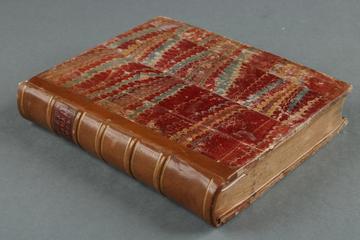
Saunders, William 1743 - 1817
- Nationality:
- Scottish; British
(1743-1817), physician
William Saunders, born in Banff, Scotland, was educated at the University of Edinburgh in medicine and graduated MD in 1765, with a thesis on antimony. He established a large practice in London in 1766 and gave lectures on chemistry with W. Keir at Red Lion Court, and materia medica at Guy's Hospital, which were well attended. He also lectured on medicine and in 1770 became the first in London to advertise clinical lectures. He is said to have made £1000 a year from his lectures, which he published.
In 1770 he was elected Physician of Guy's Hospital, an appointment that made the hospital's embryonic medical school a reality. He lectured there for the next 32 years, each year giving three courses of four months each. His lectures on "Chemistry and Pharmacy" were particularly well attended.
He wrote several books. His lectures on pharmacy were published in 1767 as Compendium Medicina Practium, in which he supported the views of Sir George Baker that "Devonshire Colic" was caused by lead used in the seals of wooden cider presses, a famous discovery in the early history of toxicology and epidemiology. In the Library of Congress there is an 1810 American edition of his A Treatise on the Structure, Economy, and Diseases of the Liver, Together with an Inquiry into the Properties and Component Parts of the Bile and Biliary Concretions. He also published books on mercury in 1768, antimony in 1773, mephitic acid (carbonic acid) in 1777, red Peruvian bark (the source of quinine) in 1782, and mineral waters in 1800.
Saunders portrait was presented to the Royal College of Physicians by his son John James Saunders and can be seen there in Regents Park. He became a Fellow of the College in 1790. In 1792 he gave its Goulstonian lectures, on cirrhosis of the liver, which he was probably the first English physician to study. In 1796 he delivered the College's Harveian oration. In 1793 he became a Fellow of the Royal Society. In 1805 he was chairman of a meeting that led to the formation of the Royal Medical and Chirurgical Society. He later became its first president. In 1807 he was appointed Physician to the Prince Regent (later King George IV).
In 1769 he married Margaret Petrie. They had two children. Margaret died in 1777, and in 1781 he married Charity Ward, by whom he had four children. Charity died in 1799. He resigned from Guy's Hospital in 1802, and retired from practice in 1814, moving from Russell Square to Enfield, Middlesex, where he died on 29 May 1817.